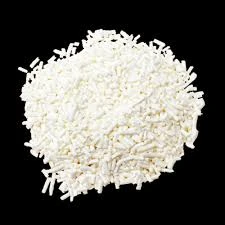
common organic solvents
Common Organic Solvents An Overview
Organic solvents play a pivotal role in various industries and laboratories, serving as essential components in chemical processes, extraction methods, and analytical techniques. These versatile compounds have a wide range of applications, from paint thinners and adhesives to pharmaceuticals and pesticides. Understanding common organic solvents, their properties, uses, and safety considerations is crucial for anyone working in fields that rely on these substances.
What Are Organic Solvents?
Organic solvents are carbon-based liquids used to dissolve, suspend, or extract other materials, typically organic compounds. They are classified based on their polarity. Polar solvents, such as water and ethanol, have a high dielectric constant and can dissolve ionic and polar substances. Nonpolar solvents, like hexane and toluene, are better suited for dissolving nonpolar compounds. The choice of solvent often depends on the nature of the solute and the specific process being undertaken.
Common Types of Organic Solvents
1. Acetone Widely known as a strong and fast-evaporating solvent, acetone is used in nail polish removers, cleaning agents, and laboratories for various applications, including the extraction of substances and as a solvent for plastics and synthetic fibers.
2. Ethanol Commonly used in alcoholic beverages, ethanol is also a versatile solvent that can dissolve both polar and nonpolar substances. It is often found in pharmaceuticals, personal care products, and as a biofuel. Ethanol is favored in many applications due to its relatively low toxicity compared to other organic solvents.
3. Toluene This aromatic hydrocarbon is frequently employed as a solvent in paint thinners, adhesives, and industrial processes. Toluene is effective for dissolving resins and coatings but requires care due to its potential health hazards, including effects on the central nervous system.
4. Methanol Often referred to as wood alcohol, methanol is used in antifreeze, as a fuel, and in the production of formaldehyde. While it is a good solvent for many polar compounds, methanol is highly toxic and must be handled with caution.
5. Dichloromethane (DCM) This solvent is prized for its ability to dissolve a wide range of organic compounds. Its low boiling point makes it a popular choice for extraction processes in laboratories. However, due to its potential harmful effects on health and the environment, its use is becoming increasingly regulated.
common organic solvents

6. Hexane A nonpolar solvent, hexane is commonly used in the extraction of oils and fats from seeds and vegetables. It is also used in laboratories as a solvent for various organic reactions. Despite its widespread use, hexane is flammable and poses health risks with prolonged exposure.
Applications of Organic Solvents
The applications of organic solvents are manifold. In the pharmaceutical industry, they are critical in drug formulation, extraction, and purification processes. In the paint and coatings industry, solvents help in dispersing pigments and ensuring smooth application. Additionally, they play a vital role in analytical chemistry, where they are used as mediums for chromatographic and spectroscopic techniques.
Organic solvents are also integral to the functionality of many household products, including cleaning agents, cosmetics, and personal care items. Their role in these products cannot be overstated, as they facilitate the effective delivery of active ingredients and enhance the user experience.
Safety and Environmental Considerations
While organic solvents are immensely useful, they also pose health and environmental risks. Exposure to solvent vapors can lead to various health issues, including headaches, dizziness, respiratory problems, and long-term effects on the nervous system. Proper ventilation, personal protective equipment (PPE), and adherence to safety guidelines are crucial when handling these substances.
Environmental impacts must also be considered, as many organic solvents contribute to air and water pollution. The use of greener solvents and alternative methods is gaining traction in research and industry, focusing on reducing reliance on hazardous organic solvents and minimizing their ecological footprint.
Conclusion
In summary, common organic solvents are indispensable in many sectors due to their unique properties and capabilities. However, as their utilization continues, it is vital to balance their benefits with the necessary safety measures and environmental stewardship. By fostering a deeper understanding of organic solvents, we can ensure that their applications contribute positively to society while mitigating potential risks.
-
Understanding Synthetic Rubber OptionsNewsApr.27,2025
-
Trichloroisocyanuric Acid: Essential for Clean and Safe WaterNewsApr.27,2025
-
Sodium Dichloroisocyanurate: Key to Safe Water TreatmentNewsApr.27,2025
-
Sodium Acid Pyrophosphate: Essential in Modern Food ProcessingNewsApr.27,2025
-
Essential Water Treatment ChemicalsNewsApr.27,2025
-
Denatured Alcohol and Its Industrial UsesNewsApr.27,2025
-
The Versatile Uses of Sodium BicarbonateNewsApr.24,2025
Hebei Tenger Chemical Technology Co., Ltd. focuses on the chemical industry and is committed to the export service of chemical raw materials.
-

view more DiethanolisopropanolamineIn the ever-growing field of chemical solutions, diethanolisopropanolamine (DEIPA) stands out as a versatile and important compound. Due to its unique chemical structure and properties, DEIPA is of interest to various industries including construction, personal care, and agriculture. -

view more TriisopropanolamineTriisopropanolamine (TIPA) alkanol amine substance, is a kind of alcohol amine compound with amino and alcohol hydroxyl, and because of its molecules contains both amino and hydroxyl. -

view more Tetramethyl Thiuram DisulfideTetramethyl thiuram disulfide, also known as TMTD, is a white to light-yellow powder with a distinct sulfur-like odor. It is soluble in organic solvents such as benzene, acetone, and ethyl acetate, making it highly versatile for use in different formulations. TMTD is known for its excellent vulcanization acceleration properties, which makes it a key ingredient in the production of rubber products. Additionally, it acts as an effective fungicide and bactericide, making it valuable in agricultural applications. Its high purity and stability ensure consistent performance, making it a preferred choice for manufacturers across various industries.











